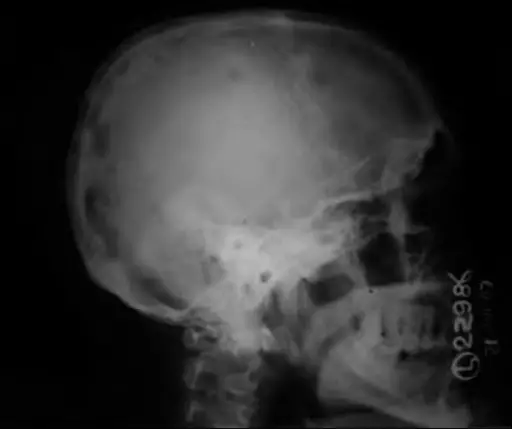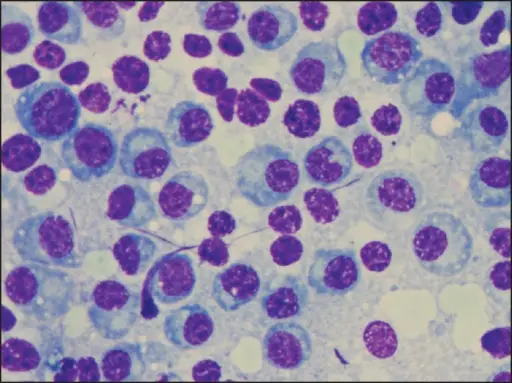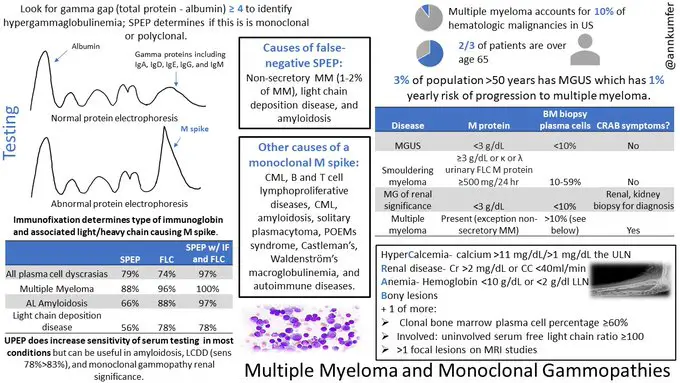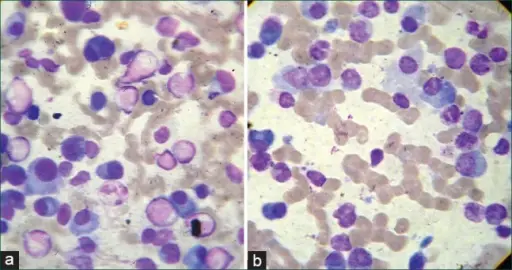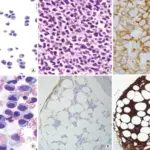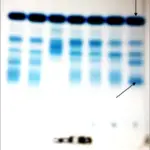Multiple myeloma is a plasma cell malignancy in which monoclonal plasma cells proliferate in bone marrow, resulting in an overabundance of monoclonal paraprotein (M protein), destruction of bone, and displacement of other hematopoietic cell lines.
What is the Pathology of Multiple Myeloma?
The pathology of multiple myeloma is:
-Etiology: The cause of multiple myeloma is not yet established. Roles have been suggested for a variety of factors, including genetic causes, environmental or occupational causes, MGUS, radiation, chronic inflammation, and infection.
-Genes involved: c-myc gene, N-Ras gene, K-ras gene.
-Pathogenesis: The sequence of events that lead to multiple myeloma is commonly preceded by MGUS, a premalignant condition that results when plasma cells undergo mutations that restore their capacity for proliferation.
-Histology: The histology associated with multiple myeloma shows mature myeloma cells usually indistinguishable from normal cells, with a round eccentric cartwheel nucleus without nucleoli and abundant basophilic cytoplasm. Immature myeloma cells have an irregular nucleus with more dispersed chromatin, a higher N/C ratio, and usually prominent nucleoli.
How does Multiple Myeloma Present?
Patients with multiple myeloma typically affects men slightly more than women,) present at age over 60 years. The average age at diagnosis is 70 years. The symptoms, features, and clinical findings associated with multiple myeloma include bone pain, pathologic fractures, spinal cord compression, weakness, malaise, anemia, bleeding, hypercalcemia, kidney failure, and neuropathies.
How is Multiple Myeloma Diagnosed?
Multiple myeloma is diagnosed by complete blood count and differential, erythrocyte sedimentation rate, 24-hour urine collection for quantification of the Bence Jones protein, protein, and creatinine clearance; proteinuria greater than 1 g/24 hr is a major criterion, C-reactive protein, and very high M protein levels.
How is Multiple Myeloma Treated?
Multiple myeloma is treated by chemotherapy and immunosuppression, peripheral blood or bone marrow stem cell transplantation.
What is the Prognosis of Multiple Myeloma?
The prognosis of multiple myeloma is worrisome, with survival ranging from 1 year to more than 10 years. Median survival in unselected patients with MM is 3 years. The 5-year relative survival rate is 50.0%.

